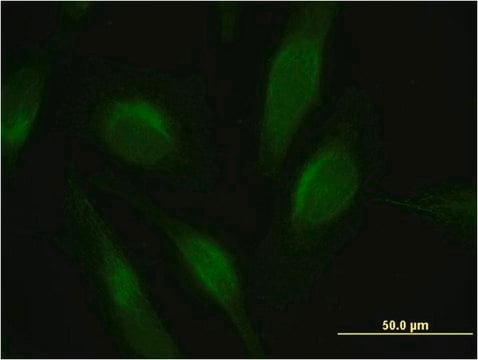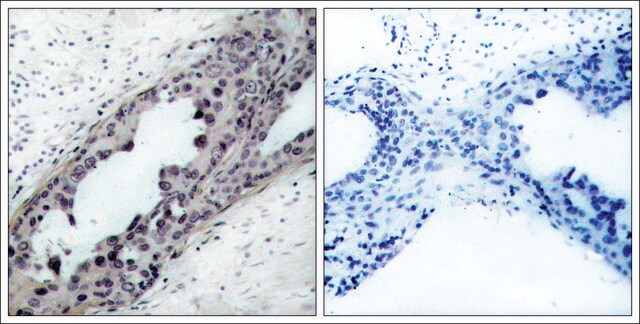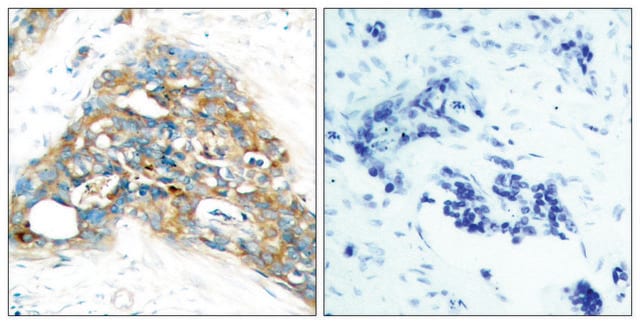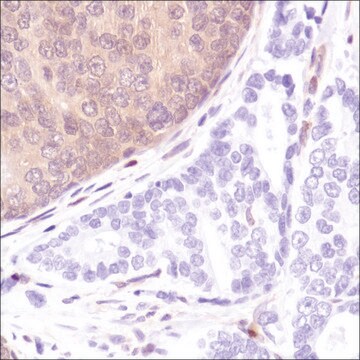P3487
Monoclonal Anti-PTEN antibody produced in mouse
~1 mg/mL, purified immunoglobulin, clone PTN-18, buffered aqueous solution
Synonym(s):
Anti-Mutated in multiple advanced cancers 1, Anti-PTEN1, Anti-PTENbeta, Anti-Phosphatase and tensin homolog, Anti-TEP1
About This Item
Recommended Products
biological source
mouse
conjugate
unconjugated
antibody form
purified immunoglobulin
antibody product type
primary antibodies
clone
PTN-18, monoclonal
form
buffered aqueous solution
mol wt
antigen ~55 kDa
species reactivity
mouse, human, rat
concentration
~1 mg/mL
technique(s)
immunocytochemistry: suitable using 4% paraformaldehyde-0.5% Triton X-100 fixation
indirect ELISA: suitable
microarray: suitable
western blot: 5-10 μg/mL using whole extract of rat brain
isotype
IgG2a
UniProt accession no.
shipped in
dry ice
storage temp.
−20°C
target post-translational modification
unmodified
Gene Information
human ... PTEN(5728)
mouse ... Pten(19211)
rat ... Pten(50557)
General description
Specificity
Immunogen
Biochem/physiol Actions
Physical form
Disclaimer
Not finding the right product?
Try our Product Selector Tool.
recommended
Storage Class Code
10 - Combustible liquids
WGK
WGK 3
Flash Point(F)
Not applicable
Flash Point(C)
Not applicable
Certificates of Analysis (COA)
Search for Certificates of Analysis (COA) by entering the products Lot/Batch Number. Lot and Batch Numbers can be found on a product’s label following the words ‘Lot’ or ‘Batch’.
Already Own This Product?
Find documentation for the products that you have recently purchased in the Document Library.
Articles
Quantitative and qualitative western blotting to validate knockdown by esiRNA.
Cancer stem cell media, spheroid plates and cancer stem cell markers to culture and characterize CSC populations.
Our team of scientists has experience in all areas of research including Life Science, Material Science, Chemical Synthesis, Chromatography, Analytical and many others.
Contact Technical Service








